Send Email
Call / WhatsApp Anytime
Send Email
Call / WhatsApp Anytime
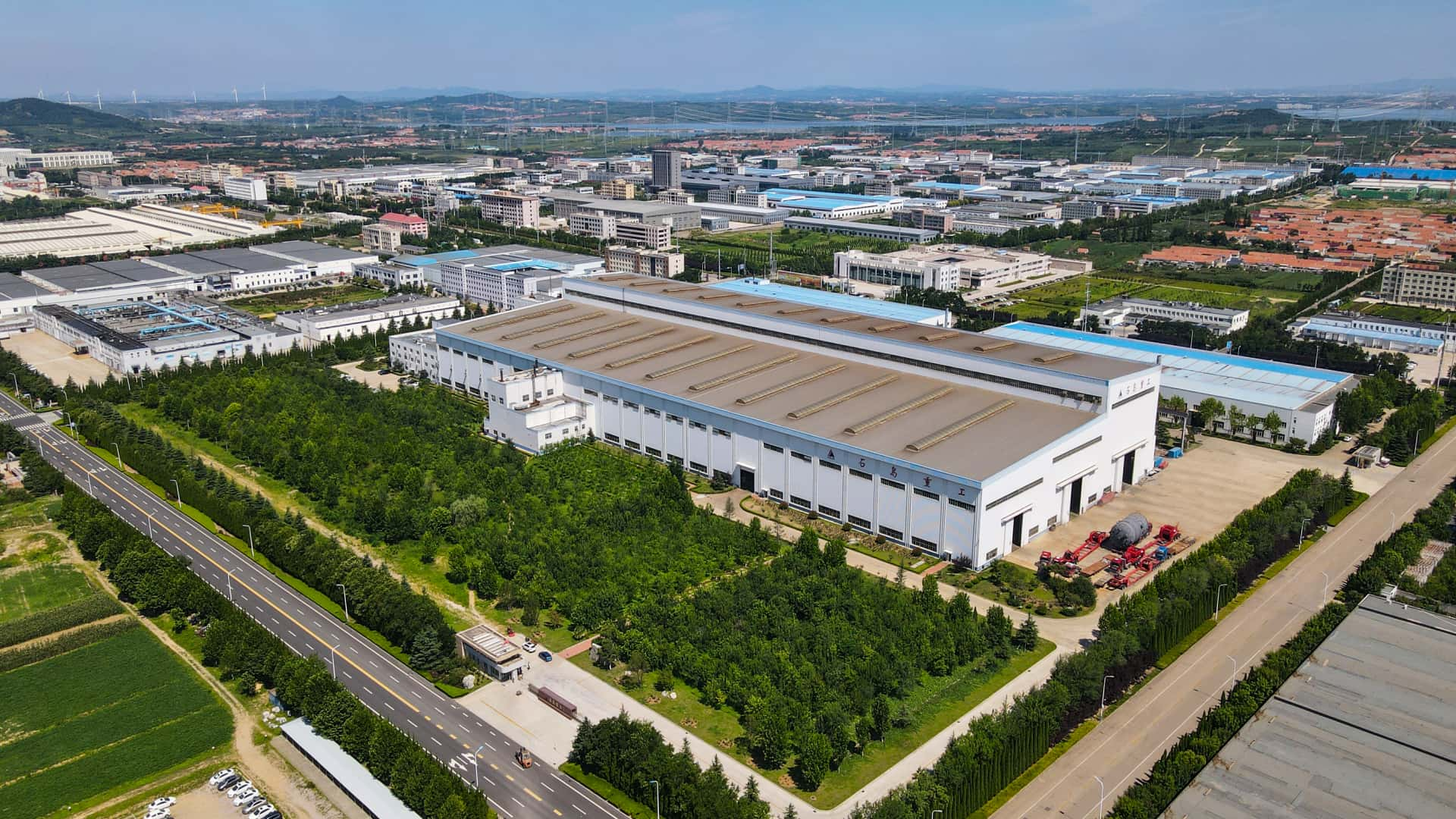
Call / WhatsApp Anytime
The refining industry involves complex process systems that convert crude oil into high-value fuels and petrochemical feedstocks through critical operations such as distillation, catalytic cracking, hydroprocessing, reforming, coking, gas separation, and sulfur recovery. These operations typically occur under extreme conditions—high temperatures, high pressures, corrosive and flammable environments—placing stringent demands on equipment reliability.
As essential components of refinery infrastructure, pressure vessels are engineered to withstand such harsh conditions. Their versatility in structure, high pressure resistance, and sealing capability make them indispensable for key applications including chemical reactions, phase separation, storage, heat exchange, and system buffering—ensuring safe, stable, and continuous refinery operations.
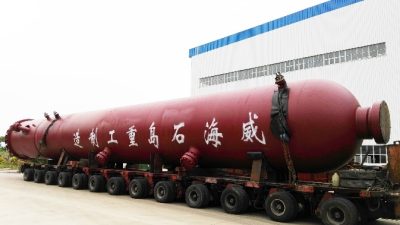
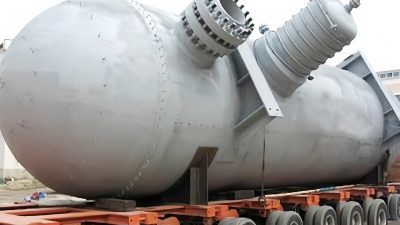
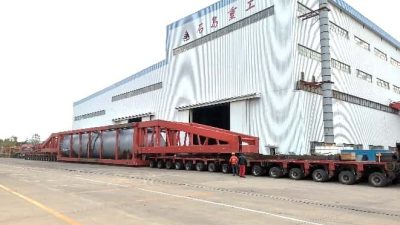
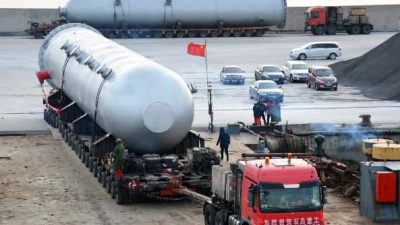
| Client | Equipment Name | Spec | Weight / Material |
|---|---|---|---|
| Xinyue Fuel Chemical | Hydrocracking Reactor | φ4000×(212+6.5)×22049mm | 626.6T / 12Cr2Mo1V forged + overlay welding E309L + E347 |
| Xinyue Fuel Chemical | Hydrofining Reactor | φ4000×(212+6.5)×19636mm | 570T / 12Cr2Mo1V forged + overlay welding E309L + E347 |
| Dongfang Hualong Industry | Pre-Hydrogenation Reactor | Φ3400×14600 (T.L.) × (78+6.5) | 147.962T / 14Cr1MoR(H) + overlay welding E309L + E347 |
| Runcheng Petrochemical | Hot High-Pressure Separator | Φ2600×(210+6.5)×6250mm | 174T / 15CrMoR(H) + E347 |
| CFHI Nuclear Power & Petrochemical | Cold High-Pressure Separator | Φ3000×196×8400mm | 192.14T / 16Mn (R-HIC) IV / Q345R (R-HIC) |
Each refining unit has specialized vessel requirements. From crude desalting to deep conversion, pressure vessels are widely applied in every core process.
| Refining Unit | Pressure Vessel Example | Function Summary |
|---|---|---|
| Crude Pretreatment | Desalter, Buffer Tank | Removes salt, stabilizes flow |
| Atmospheric/Vacuum Dist. | Flash Drum, Bottom Tank | Separates phases, buffers flow |
| FCC (Catalytic Cracking) | Fractionator Bottom Drum, Stripper | Catalyst handling, phase split |
| Hydrotreating/Hydrocracking | Hydrotreater, HP Separator | Desulfurization, upgrading |
| CCR Reforming | Reformer Reactor, Reboiler | Increases octane, converts naphtha |
| Delayed Coking | Coke Drum, Steam Drum | Cracks residue, produces coke |
| Gas Treating & Sulfur | Absorber, Stripper, Regenerator | Gas purification, sulfur recovery |
| Product Storage & Transfer | Bullet Tank, Vertical Tank | Stores LPG, diesel, gasoline |
Pressure vessels serve different purposes such as reacting, separating, exchanging heat, storing, or buffering fluids. Below are typical examples for each category.
| Function | Typical Vessel | Description |
| Reaction | Hydrocracking Reactor | Enables chemical conversion under pressure |
| Separation | HP Separator, Flash Drum | Separates gas/liquid phases |
| Heat Exchange | Shell & Tube Heat Exchanger | Transfers energy between fluids |
| Storage | Bullet Tank, Vertical Tank | Stores liquids/gases safely |
| Buffering | Surge Drum, Gas Receiver | Dampens pressure fluctuations |
Pressure vessels come in varied configurations to suit different installation spaces and operational needs in a refinery.
| Structure Type | Example | Features |
| Horizontal Cylindrical | Horizontal Tank, Reactor | Stable and compact for ground mounting |
| Vertical Column | Distillation or Absorber Tower | High contact efficiency for gas-liquid systems |
| Spherical Vessel | LPG Spherical Tank | Uniform stress distribution for high pressure |
| Shell & Tube Heat Exch. | Multitube Exchanger | Widely used for energy recovery |
| Modular Skid Units | Skid-Mounted Reactor/Separator | Facilitates offsite fabrication and rapid assembly |
Different types of vessels match specific pressure, temperature, and media conditions. Below are examples with key specs.
| Equipment Name | Refinery Process | Spec Example (Φ×L, Pressure) |
| Hydrotreater Reactor | Hydrotreating / Hydrocracking | Φ3400×22000mm, 21MPa |
| HP Separator | Gas-liquid separation | Φ3000×8400mm, 6.3MPa |
| CCR Reformer Reactor | Continuous Reforming | Φ2500×14000mm, 3.5MPa |
| Coke Drum | Delayed Coking | Φ6500×40000mm, low pressure, high temp |
| Absorber | Amine / sulfur scrubbing | Φ2600×15000mm, corrosion resistant |
| LPG Spherical Tank | LPG Storage | Φ18000mm, 1.6MPa |
Design and fabrication of refinery vessels must comply with local and international standards to ensure safety and reliability.
| Standard Code | Name | Application Scope |
| ASME Section VIII | Boiler and Pressure Vessel Code | Global/export projects |
| GB150 / GB151 | Chinese pressure vessel standards | Domestic projects |
| API 510 / 579 | In-service inspection & FFS | Life assessment and repair |
| API 650 / 620 | Storage tank design standards | For oil and chemical tanks |
| NACE MR0175 / ISO15156 | Materials in sour gas environments | Anti-H₂S stress corrosion |
Material choice is critical to ensure vessel integrity under corrosive, high-pressure, or high-temperature environments. The following table summarizes typical options.
| Material Type | Features | Application Scenario |
| Q345R / 16MnR | Carbon steel, cost-effective | Low-pressure vessels |
| 15CrMoR | Alloy steel, high-temp resistant | Hydrocrackers, reactors |
| 304 / 316L Stainless | Acid/alkali corrosion resistant | Amine units, clean fluids |
| Duplex Steel 2205 | Stress/pitting corrosion resistant | Chloride and sour gas areas |
| Hastelloy / Inconel | Extreme corrosion resistance | Sulfur recovery, acid service |
Protection measures include: lining, cladding, painting, cathodic protection, etc.
Refinery-grade pressure vessels involve complex design, manufacturing and service requirements. Below are key challenges and resolutions.
| Challenge | Solution |
| Ultra-thick welding | SAW + multi-pass + post-weld heat treat |
| Transport and site assembly | Modular fabrication + field welding |
| H₂S-induced corrosion | NACE compliant materials + monitoring |
| Multi-code global projects | ASME + GB + PED certified production |
| Smart operation requirements | IoT sensor + FFS + predictive systems |
Driven by digitalization, energy transition, and carbon reduction goals, pressure vessels in refining are evolving toward smarter, greener, and more modular directions.
| Trend | Description |
| Modular fabrication | Factory prefabrication + fast onsite install |
| Smart monitoring | IoT + digital twin for predictive maintenance |
| Green materials | High-efficiency, low-carbon alloys |
| Localization | Domestic high-end equipment replacing imports |
| Low-emission manufacturing | Energy-saving, reduced carbon footprint |
Pressure vessels are the foundation of safe and efficient refining operations. As refining technology advances toward high-integration, green development, and digital intelligence, the role of pressure vessels will become even more critical. Whether in high-pressure reaction zones or corrosive treatment systems, a well-engineered pressure vessel is not just a piece of equipment—it is a safeguard of industrial reliability and productivity.
If your project involves pressure vessel design, selection, or turnkey delivery, our expert team is ready to support with end-to-end solutions tailored to your operational needs.
Why Choose Us?
Certified Safety, Reliable Quality, Custom-Engineered Pressure Vessels.
